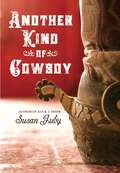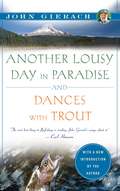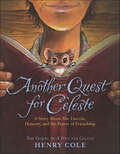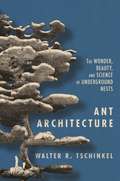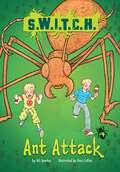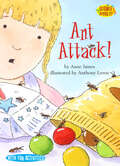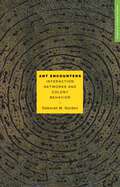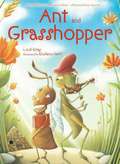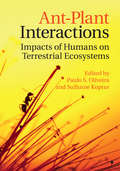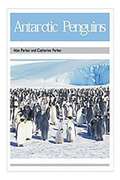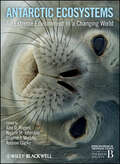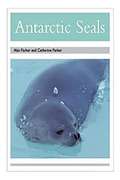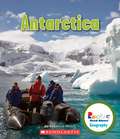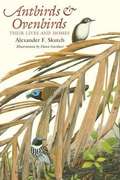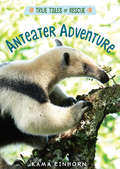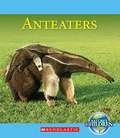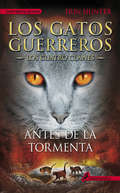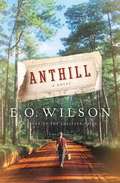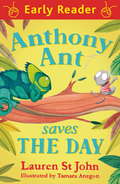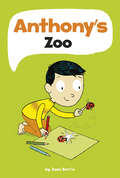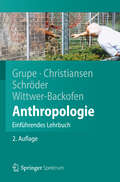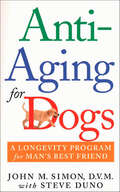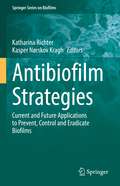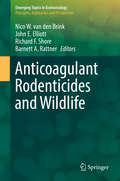- Table View
- List View
Another Kind of Cowboy
by Susan JubyFor Alex Ford, dressage is an oasis. In the stable, he can slip into his riding pants, shed the macho cowboy image, and feel like himself for a change. For Cleo O'Shea, dressage is a fresh start. She's got a new boarding school, absentee parents, and, best of all, no one to remember her past. . . . They're an unlikely pair. Cleo's looking for love, but Alex has a secret he's not ready to give up, and a flirtation with Cleo is the last thing on his mind. But you can't find romance before you know real friendship, and sometimes the last person you'd ever think of as a friend ends up being the one you need the most. Susan Juby's trademark humor brings life and laughter to this remarkable story of relationships, mixed signals, and the soul-searching that sometimes takes two.
Another Lousy Day in Paradise (John Gierach's Fly-fishing Library)
by John GierachJohn Gierach invites fly fishermen and great writing aficionados to partake in this collection of witty, perceptive observations on fishing and life.
Another Quest for Celeste: A Story About Abe Lincoln, Honesty, and the Power of Friendship (Nest for Celeste #2)
by Henry ColeCelebrated author and illustrator Henry Cole uses stunningly detailed black-and-white artwork to illuminate a tale of friendship between an adventurous mouse and a boy who would become one of America’s greatest presidents. In this sequel to A Nest for Celeste, Celeste is hundreds of miles from home following an unexpected journey aboard a Mississippi steamboat. After mishaps and disasters, she finds herself on the frontier in southern Indiana. It's 1822, and Celeste meets a tall, lanky boy wielding an ax: a young Abraham Lincoln. The journey reveals the harsh realities of frontier life for the Lincoln family. But with the help of Celeste’s new woodland animal friends and some creativity, she may just prove that even the littlest creatures can make a big difference. And it’s in losing her way that Celeste finds herself in a place she never expected—home, finally.“A stand-alone sequel to A Nest for Celeste (2010), this chapter book has everything that made its predecessor so enjoyable: an inviting format, good storytelling, and at least one large, beautifully drawn shaded pencil illustration on each double-page spread. An inviting entry into historical fiction.” –Booklist
Ant Architecture: The Wonder, Beauty, and Science of Underground Nests
by Walter R. TschinkelAn unprecedented look at the complex and beautiful world of underground ant architectureWalter Tschinkel has spent much of his career investigating the hidden subterranean realm of ant nests. This wonderfully illustrated book takes you inside an unseen world where thousands of ants build intricate homes in the soil beneath our feet.Tschinkel describes the ingenious methods he has devised to study ant nests, showing how he fills a nest with plaster, molten metal, or wax and painstakingly excavates the cast. He guides you through living ant nests chamber by chamber, revealing how nests are created and how colonies function. How does nest architecture vary across species? Do ants have "architectural plans"? How do nests affect our environment? As he delves into these and other questions, Tschinkel provides a one-of-a-kind natural history of the planet's most successful creatures and a compelling firsthand account of a life of scientific discovery.Offering a unique look at how simple methods can lead to pioneering science, Ant Architecture addresses the unsolved mysteries of underground ant nests while charting new directions for tomorrow’s research, and reflects on the role of beauty in nature and the joys of shoestring science.
Ant Attack (S.W.I.T.C.H. #4)
by Ali SparkesDanny and Josh were having a great day until Tarquin, the most annoying boy in the neighborhood, came over to play. He dresses like he's 55, doesn't do anything fun, and pulls the legs off of bugs. The twins thought that their day couldn't get any worse, but when they turn into ants by accident, they realize how wrong they were! Can Danny and Josh find a safe place to hide until they turn human again? And with Tarquin in the garden, will they make it out with all of their legs?
Ant Attack! (Science Solves It!)
by Anne JamesThe Science Solves It! series merges fiction and science in storylines that intrigue kids and encourage them to observe, investigate, predict, and experiment! Young readers ages 5–8 will be inspired by the relatable characters in each story as they solve kid-sized mysteries and dilemmas. Jenny keeps her candy stash a secret until an army of ants discovers where it's hidden. Will she be able to lure them away before the secret is discovered? (Level One; Science topic: Ants)
Ant Cities (Let's-Read-and-Find-Out Science #2)
by Arthur DorrosDid you ever wonder where an ant goes when it disappears into an anthill? Underneath the hill, there are miles of tunnels and hundreds of rooms! With simple, easy-to-understand words and colorful illustrations, Arthur Dorros explains the life of a harvester ant for the early reader and even shows readers how to build their own ant farms!
Ant Encounters: Interaction Networks and Colony Behavior (Primers in Complex Systems #1)
by Deborah M. GordonHow do ant colonies get anything done, when no one is in charge? An ant colony operates without a central control or hierarchy, and no ant directs another. Instead, ants decide what to do based on the rate, rhythm, and pattern of individual encounters and interactions--resulting in a dynamic network that coordinates the functions of the colony. Ant Encounters provides a revealing and accessible look into ant behavior from this complex systems perspective.Focusing on the moment-to-moment behavior of ant colonies, Deborah Gordon investigates the role of interaction networks in regulating colony behavior and relations among ant colonies. She shows how ant behavior within and between colonies arises from local interactions of individuals, and how interaction networks develop as a colony grows older and larger. The more rapidly ants react to their encounters, the more sensitively the entire colony responds to changing conditions. Gordon explores whether such reactive networks help a colony to survive and reproduce, how natural selection shapes colony networks, and how these structures compare to other analogous complex systems.Ant Encounters sheds light on the organizational behavior, ecology, and evolution of these diverse and ubiquitous social insects.
Ant and Grasshopper
by Luli Gray Giuliano FerriWhen Ant spies a carefree Grasshopper playing a fiddle outside on the lawn, Ant immediately harrumphs at the insect's foolishness and continues to go about his very serious business of gathering and counting his food for the winter. But Ant finds Grasshopper's music and whimsy more catchy than he'd like, and soon he's distracted by his own rhyming and doodling! When the harsh winter hits and Ant finds Grasshopper cold and hungry in the snow, he can't help but bring him inside. Only after opening his home to Grasshopper does Ant realize that music, dancing, and laughter have their place in his life, too. Luli Gray's funny twist on this fable will have readers giggling and singing. With Giuliano Ferri's lush and whimsical illustrations, this book is both heartwarming and lovely to behold. Image descriptions present.
Ant-Plant Interactions: Impacts of Humans on Terrestrial Ecosystems (Interspecific Interactions Ser.)
by Oliveira Paulo S. Suzanne KopturAnts are probably the most dominant insect group on Earth, representing ten to fifteen percent of animal biomass in terrestrial ecosystems. Flowering plants, meanwhile, owe their evolutionary success to an array of interspecific interactionsOCosuch as pollination, seed dispersal, and herbivoryOCothat have helped to shape their great diversity. "The Ecology and Evolution of Ant-Plant Interactions" brings together findings from the scientific literature on the coevolution of ants and plants to provide a better understanding of the unparalleled success of these two remarkable groups, of interspecific interactions in general, and ultimately of terrestrial biological communities. "The Ecology and Evolution of Ant-Plant Interactions" synthesizes the dynamics of ant-plant interactions, including the sources of variation in their outcomes. Victor Rico-Gray and Paulo S. Oliveira capture both the emerging appreciation of the importance of these interactions within ecosystems and the developing approaches that place studies of these interactions into a broader ecological and evolutionary context. The collaboration of two internationally renowned scientists, "The Ecology and Evolution of Ant-Plant Interactions" will become a standard reference for understanding the complex interactions between these two taxa. "
Antarctic Penguins (Rigby PM Collection Silver (Levels 23-24), Fountas & Pinnell Select Collections Grade 3 Level O)
by Alan Parker Catherine ParkerDiscusses Emperor and Adélie penguins, their feeding habits and reproduction. In addition the dangers to their life are outlined including the difficulties of survival in Antarctica and their vulnerability to preditors.
Antarctic Ecosystems: An Extreme Environment in a Changing World
by Alex D. Rogers Andrew Clarke Nadine M. Johnston Eugene J. MurphySince its discovery Antarctica has held a deep fascination for biologists. Extreme environmental conditions, seasonality and isolation have lead to some of the most striking examples of natural selection and adaptation on Earth. Paradoxically, some of these adaptations may pose constraints on the ability of the Antarctic biota to respond to climate change. Parts of Antarctica are showing some of the largest changes in temperature and other environmental conditions in the world. In this volume, published in association with the Royal Society, leading polar scientists present a synthesis of the latest research on the biological systems in Antarctica, covering organisms from microbes to vertebrate higher predators. This book comes at a time when new technologies and approaches allow the implications of climate change and other direct human impacts on Antarctica to be viewed at a range of scales; across entire regions, whole ecosystems and down to the level of species and variation within their genomes. Chapters address both Antarctic terrestrial and marine ecosystems, and the scientific and management challenges of the future are explored.
Antarctic Seals (Rigby PM Collection Ruby (Levels 27-28), Fountas & Pinnell Select Collections Grade 3 Level Q)
by Alan Parker Catherine ParkerAnimal Facts: Polar Animals. Antarctic Seals by Alan Parker, Catherine Parker.
Antarctica (Rookie Read-About Geography)
by Rebecca E. Hirsch John CottleYoung readers learn about the most remote continent, the people who explore and study there, as well as the animals that live there.
Antbirds and Ovenbirds
by Alexander F. Skutch Dana GardnerAntbirds and ovenbirds, two of the five largest families of birds found only in the Western Hemisphere, have been among Alexander Skutch's favorites for more than six decades. In this book, he draws on years of observations to describe the life cycle of these fascinating birds, which inhabit Latin America from tropical Mexico to Tierra del Fuego. Skutch covers all aspects of the birds' lives, including the various species in each family, food and foraging, daily life, voice, displays and courtship, nests and incubation, and parental care. He also recounts anecdotes from his own experiences, creating vivid pictures of antbirds foraging for the insects Skutch stirs up on walks through the rainforest and of ovenbirds repairing the observation holes that he opens in their elaborate nests. As some of tropical America's least studied birds, antbirds and ovenbirds surely merit the extensive treatment given them here by one of our most distinguished senior ornithologists. Over fifty line drawings by noted bird artist Dana Gardner make this book a delight for both armchair and field naturalists.
Anteater Adventure (True Tales of Rescue)
by Kama EinhornAn up‑close look at what life is like the morning after a terrible hurricane for anteater Abi in this photo‑packed series exploring the stories and science behind animal sanctuaries. Abi takes readers behind the scenes of an anteater sanctuary in Belize in this nonfiction chapter book for elementary‑aged readers. Includes full‑color photos, graphics, and maps.
Anteaters (Nature's Children)
by Lorien KiteIntroduces the reader to anteaters, where they live, what they eat, their young and more.
Antes de la tormenta: Los gatos guerreros IV - Los cuatro clanes (Los Gatos Guerreros | Los Cuatro Clanes #Volumen 4)
by Erin HunterMás intrigas, más aventuras y más rivalidades en esta cuarta entrega de «Los Gatos Guerreros | Los Cuatro Clanes». Tras el destierro de Garra de Tigre, el Clan del Trueno vive un tiempo de relativa paz y concordia, aunque la traición del antiguo lugarteniente ha supuesto un duro golpe para Estrella Azul. Por este motivo, Corazón de Fuego ha de ocuparse del día a día del clan, además de supervisar a Nimbo, su problemático aprendiz respondón y nada disciplinado. Sin embargo, lo que más preocupa al joven lugarteniente es la creciente sensación de que Garra de Tigre acecha en la espesura del bosque para cobrarse una terrible venganza. «Los Cuatro Clanes» es la primera saga de «Los Gatos Guerreros», una serie que se ha traducido ya a 36 idiomas, lleva vendidos más de 30 millones de ejemplares en todo el mundo y ha permanecido durante más de dos años en la lista de grandes éxitos de The New York Times.
Anthill
by Edward O. Wilson"What the hell do you want?" snarled Frogman at Raff Cody, as the boy stepped innocently onto the reputed murderer's property. Fifteen years old, Raff, along with his older cousin, Junior, had only wanted to catch a glimpse of Frogman's 1000-pound alligator. Thus, begins the saga of Anthill, which follows the thrilling adventures of a modern-day Huck Finn, whose improbable love of the "strange, beautiful, and elegant" world of ants ends up transforming his own life and the citizens of Nokobee County. Battling both snakes bites and cynical relatives who just don't understand his consuming fascination with the outdoors, Raff explores the pristine beauty of the Nokobee wildland. And in doing so, he witnesses the remarkable creation and destruction of four separate ant colonies, whose histories are epics that unfold on picnic grounds, becoming a young naturalist in the process. An extraordinary undergraduate at Florida State University, Raff, despite his scientific promise, opts for Harvard Law School, believing that the environmental fight must be waged in the courtroom as well as the lab. Returning home a legal gladiator, Raff grows increasingly alarmed by rapacious condo developers who are eager to pave and subdivide the wildlands surrounding the Chicobee River. But one last battle awaits him in his epic struggle. In a shattering ending that no reader will forget, Raff suddenly encounters the angry and corrupt ghosts of an old South he thought had all but disappeared, and learns that war is a genetic imperative, not only for ants but for men as well. Part thriller, part parable, Anthill will not only transfix readers with its stunning twists and startling revelations, but will provide readers with new insights into the meaning of survival in our rapidly changing world.
Anthony Ant Saves the Day (Early Reader)
by Lauren St JohnEarly Readers are stepping stones from picture books to reading books. A blue Early Reader is perfect for sharing and reading together. A red Early Reader is the next step on your reading journey.Antony the ant is tired of being small and wishes he was big enough to be a hero. Then, one day, he climbs to the top of the tallest tree in the jungle and makes an enormous discovery!
Anthony's Zoo (Wordless Graphic Novels)
by Juan BerrioAnthony begins his day at home with nothing but his colored pencils to keep him company. Soon an animal visitor arrives and then so does another one. Then more and more and more. What will happen when Mom sees the wildlife in the house? Find out in this wordless graphic novel in which the artwork brings the story to life.
Anthropologie: Einführendes Lehrbuch (Springer-Lehrbuch)
by Gisela Grupe Inge Schröder Kerrin Christiansen Ursula Wittwer-BackofenAnthropologie, wörtlich übersetzt "die Lehre vom Menschen", ist eine primär biologische Disziplin - mit vielfältigen kulturwissenschaftlichen Bezügen. In diesem aktuellen Lehrbuch zur Anthropologie reduzieren die Autorinnen deshalb die Biologie des Menschen nicht auf eine Zoologie des Menschen, sondern beziehen seine kulturelle Überformung mit ein. Der Band bietet eine Einführung in die wichtigsten Fragen und ist daher besonders für das Grundstudium geeignet. Für die Neuauflage wurden nahezu alle Kapitel erheblich erweitert und aktualisiert.
Anti-Aging for Dogs: A Longevity Program for Man's Best Friend
by Steve Duno John M. SimonYou love your dog. Don't you want to keep him around for a good long time?You take steps to slow down your own aging process and stay as healthy and fit as possible-- now you can do the same for you beloved dog. Learn Dr. John Simon's amazing program for canine longevity in Anti-Aging for Dogs, and your best friend can live years beyond his normal life expectancy. Simple but effective changes in your dog's lifestyle, diet, exercise program, environment, and behavior can yield astounding results. In this invaluable manual-- the first of its kind-- well-known and respected veterinarian Dr. John M. Simon tells you how to put this powerful program to use, with essential advice about:* Ensuring that your dog gets the right exercise, grooming, and dental hygiene* Creating a safe, healthy home environment for your dog* Avoiding common canine behavioral problems* Programs for assuring optimal nutrition, digestion, and detoxification* Plus: helpful appendices on first aid, toxic substances, and health maintenance
Antibiofilm Strategies: Current and Future Applications to Prevent, Control and Eradicate Biofilms (Springer Series on Biofilms #11)
by Katharina Richter Kasper Nørskov KraghBacteria and fungi are able to aggregate together or on surfaces in densely packed microcolonies, facilitated by extracellular polymeric substances for cell protection and stability. These biofilms have proven to be extremely hard to eradicate and remove once established. In chronic infections, this condition can result in a high degree of morbidity and mortality as regular antibiotic treatments are ineffective against biofilms. In industrial facilities, the formation of biofilms can ruin production and result in enormous financial losses. In this book, the current state of antibiofilm research is presented by experts from around the world. Novel, cutting-edge techniques and new optimized strategies based on established methods are discussed in chapters focused on biofilm prevention, treatment and control for the application in clinical, industrial and veterinary settings. Antibiofilm strategies, such as chemical and enzymatic treatments, surface modification and coatings, quorum sensing inhibition and dispersal induction, phage therapy, cold plasma treatment, hyperbaric oxygen treatment, and metal-based nanomedicine are covered, among many others. This book contributes to the UN’s Sustainable Development Goal 3: Good Health and Well-Being and is a valuable resource for healthcare professionals, microbiologists, academics and for educators to inform curricula of universities and colleges.
Anticoagulant Rodenticides and Wildlife (Emerging Topics in Ecotoxicology #5)
by John E. Elliott Nico W. van den Brink Richard F. Shore Barnett A. RattnerCommensal rodents pose health risks and cause substantial damage to property and food supplies. Rats have also invaded islands and pose a serious threat to native wildlife, particularly raptors and seabirds. Estimates of total damage from introduced rats range into the billions of dollars in developed countries. This book aims to provide a state-of-the-art overview of the scientific advancements in the assessment of exposure, effects and risks that currently used rodenticides may pose to non-target organisms in the environment, along with practical guidance for characterization of hazards. This will be discussed in relation to their efficacy, and the societal needs for rodent control, and discussion of risk mitigation and development of alternatives. The flow in the book is planned as: a. introduction and setting the scene b. problem description (risks and effects on non-targets and secondary poisoning, development of resistance) c. ; alternatives, regulation and risk mitigation d. conclusions and recommendations
